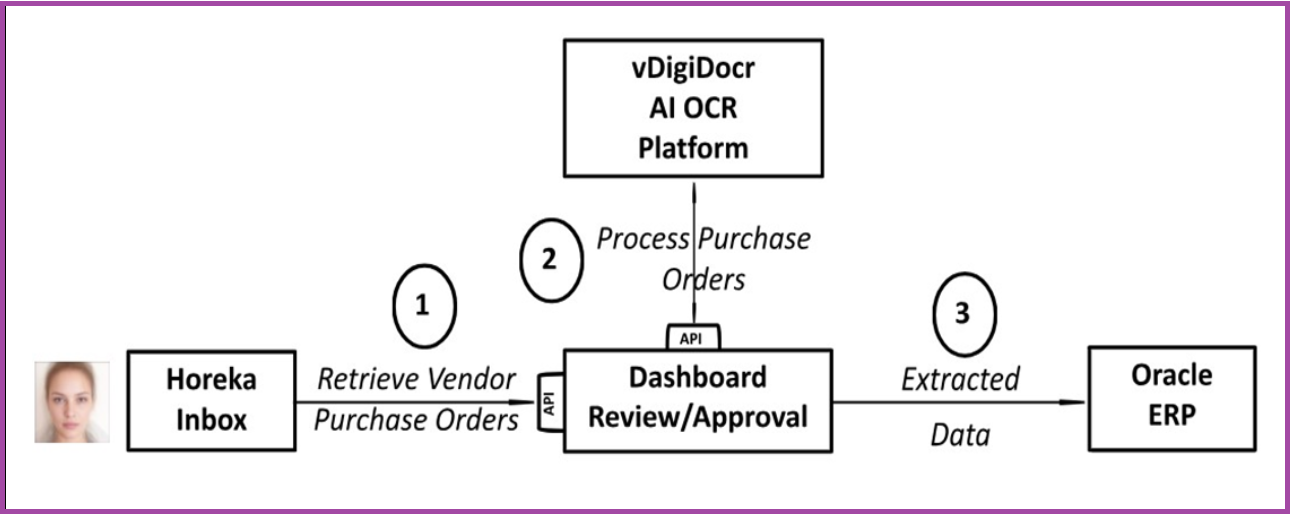Schematic Diagram of Solution
The above Use Case is applicable to any finance/accounts department of any Organization in any Domain.

The Problem:
Horeca’s nature of business is the wholesale distribution of groceries and related products across the UAE.They process 2500-3000 received Purchase Orders per day from their buyers via email. They have around 3000 buyers, and each buyer sends the PO in their own format, which is mostly a digitally generated Purchase Order.Horeca has 9 staff members who process these POs everyday manually; i.e. they download the attachment from the email and manually make entryinto their Oracle ERP system. The above process results in missing emails, entry errors, and is time consuming, in addition to dedicated staff doing non-significant repetitive work day-in and day-out without any value addition. There was an opportunity to automate the process and bring in efficiency in the system, as well as cost savings and ROI in the long term. Staff can be engaged on more value added tasks.
The Solution:
- An AI Powered OCR Solution with integration to incoming Purchase Orders, and outgoing data automatically posted into their ERP system, with a User Interface for monitoring the status and making corrections where required.
- Automatic download of POs from the email inbox and automatic transfer to the AI OCR engine for processing.
- The AI OCR Engine performs pre-processing, using AI to detect the buyer template and mark the data points on the PO from where data is to be extracted.
- The OCR Engine retrieves data and performs post-processing.
- The processed data is auto enriched, verified, and then inserted into their Oracle ERP System.
- The UI dashboard is used for the monitoring and review of the data for making any corrections
- The solution has 2 parts; the AI OCR Engine and the UI.
- The OCR Engine conversation was via API. 65k POs were pre-trained with an AI deep learning model to achieve high accuracy as part of the solution delivery.
- The accuracy achieved was around 85% (this can be increased further once the Client resolves price related discrepancies, where the price in PO does match with the price in their ERP system. This is a legacy issue requiring resolution by the client).
- Automation resulting in high productivity and greater efficiency.
- Cost saving where less staff required and ability to scale.
- Reduce loss due to human error.
- Customer satisfaction due to faster response.
Below are more details: -
Technology Used:
- The OCR Engine is fully developed in Python, with the User Interface using MERN Stack.
- The OCR Library used is ‘Tesseract’, with the option to call Google Vision for bad quality POs.
- Software delivered on AWS Cloud Infra used with pipeline for auto-deployment.